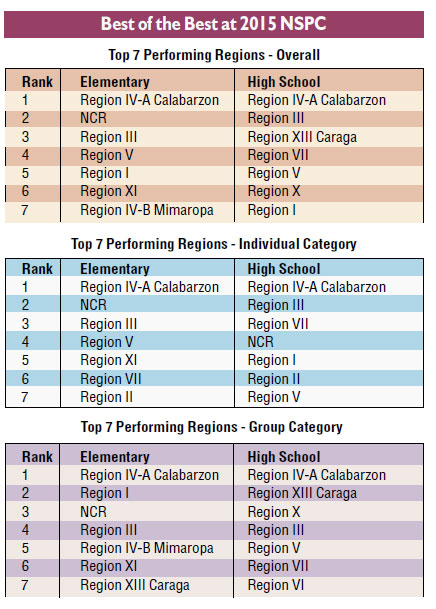
Ricardo Castro, RHS principal at the time, organized the PSSPC, as the number of student publications grew after the trail was blazed in 1911 by The Coconut of Manila High School, later renamed Araullo High School (another Manila High School was set up years later inside the Walled City or Intramuros).
The first regular student paper was La Union High School’s La Union Tab, which debuted in 1923.
Castro organized the conference to help strengthen the management of campus papers as teachers and students involved in school publications all over the country started to feel the need to standardize the style and teaching of journalism, and the running of their publications.
Eventually, as Castro’s private initiative was embraced by more and more schools, the Department of Education (DepEd) made it one of its official annual programs to promote campus journalism in all schools both public and private.
Like today, the early press conferences awarded best school paper sections and featured on-the-spot writing contests, but the categories included legend writing and interview. Student delegates also participated in spelling contests.
The PSSPC fun and games were rudely interrupted by World War II. When the event resumed in 1948, it became the National Secondary Schools Press Conference (NSSPC). But the legend writing and spelling competitions were replaced with the more appropriate copy reading and headline writing categories.
In 1969, private schools were let in, although public high schools remained the most enthusiastic participants. Participating schools were divided into three groups based on student population and performance in the annual competitions. This helped ease the pressure on many schools, as they did not have to compete with the formidable Manila schools (many graduates of Florentino Torres High School in Tondo, for instance, became top journalists of the country).
A brief interruption occurred when Ferdinand Marcos declared martial law. When the NSSPC resumed, school papers were required to have a development communication section purportedly to help promote the programs of the schools and the government. Of course, the section sang paeans to the New Society.
Development communication writing was also included in the on-the-spot individual competitions.
During the presidency of Corazon Aquino, the annual activity finally got a legal leg to stand on. Aquino signed into law the Campus Journalism Act of 1991, or Republic Act No. 7079, which was pushed by the National School Paper Advisers Association then headed by Elisa Palma, adviser of Silahis of Ramon Magsaysay High School-Manila.
The association was supported by Elena Q. Tanodra, then chief of the educational information division, DepEd Technical Service.
Groupings in the 1990s for the section competitions became based on the number of pages, rather than student population: Bracket A, publications with 16-20 pages; Bracket B, publications with 8-12 pages; and Bracket C, mimeographed or computer-printed publications.
In 1992, the conference, which was hosted by Naga City, started to recognize the teachers who supervised the publications, honoring for the first time outstanding school paper advisers.
The NSSPC officially became the National Schools Press Conference in 1995 when elementary school papers were allowed to participate. The DepEd also transferred management and supervision of the conference from the Technical Service to the bureaus of elementary and secondary education.
During the first NSPC hosted by Malolos City in Bulacan, radio script writing and broadcasting were introduced in the group competition.
Until 1998, when Tangub City in Misamis Occidental hosted the NSPC, the conference was, in keeping with tradition, held in December.
It was held in February for a few years before it was moved to April when the school year ended.
In 2012, the NSPC added digital publishing as another contest category, an acknowledgment by the DepEd that technology was changing the face of mass media.
Schools bring “collaborative publishing teams” that work during the three-day conference to publish a mini paper using computers. Each team consists of editors, reporters, artists and photographers.
Before the NSPC, competitions are held at the city and provincial divisions then regional levels to select who will go to the national conference.
For this year’s NSPC in Taguig City, the DepEd’s Lea Estuye said there were 4,556 registered participants—2,584 students and 1,972 were coaches, teachers and school officials.
Competitions were now categorized into three: group, individual and collaborative. With a report from Inquirer Research

